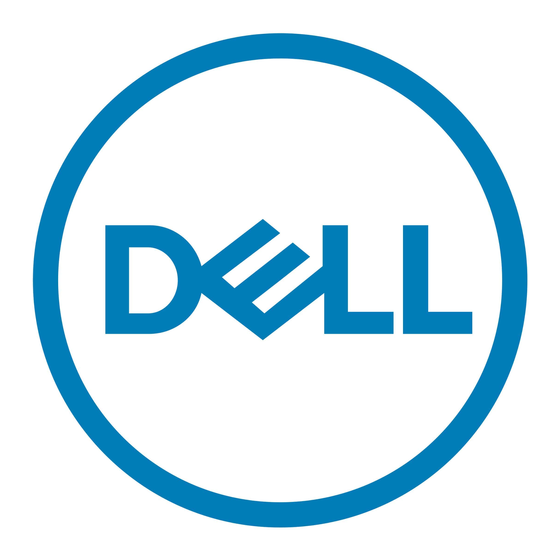Dell DX6000G Руководство по установке и настройке - Страница 11
Просмотреть онлайн или скачать pdf Руководство по установке и настройке для Сервер Dell DX6000G. Dell DX6000G 23 страницы. Rack installation instructions — static rails
Также для Dell DX6000G: Руководство пользователя (48 страниц), Информация о выпуске (7 страниц), Установка стойки (2 страниц), Установка стойки (2 страниц)

Cluster primary node address: Enter the IP address or hostname of a DX Storage node
in the target cluster. The target cluster must be the same as the one configured for the
Cluster Name Space (CNS).
Primary node SCSP port: Enter the port the DX Storage node uses for SCSP
communications. The default is '80'.
Cluster secondary node address: Enter the IP address or hostname of a second DX
Storage node (different from the primary) in the target cluster for redundancy. If sub-
clusters are configured, a node in a sub-cluster that is not the same as the primary's is
recommended. The target cluster must be the same as the one configured for the Cluster
Name Space (CNS).
Secondary node SCSP port: Enter the port the secondary DX Storage node uses for
SCSP communications. The default is '80'.
b.
If 'Yes' is selected:
Cluster name: Enter the name of the DX Storage cluster. This must match the value of the
DX Storage "cluster" parameter in the node.cfg file and be the same as the one configured
for the Cluster Name Space (CNS). Note that if using Zeroconf for discovering the list of
nodes and using a cluster name with periods in it, the periods should be replaced with
underscores to ensure proper node discovery.
11. If the Spooler/cache and mount directories do not already exist, you will be asked if you would
like them to be created. The recommended response is 'Yes', as DX Storage CFS cannot
start without these directories. You will also be asked if you would like to mount the configured
mountpoint immediately.
12. After installing DX Storage CFS initially, running the following command will start the CFS
monitoring process. This will be started automatically on subsequent reboots.
# /etc/init.d/caringo-cfs start
Note
If you attempt to start CFS without first starting the Cluster Name Space, the
initialization will fail after 60 seconds. This may leave the filesystem mounted without
a name space. To unmount the filesystem, execute the following command and then
start the name space and CFS sequentially:
fusermount -uz /mnt/mountname
2.2.4. Post-configuration File System Options
In addition to the required parameters gathered by the cfs-admin mkfs utility, there are some
optional mountpoint settings that can be set in the /etc/fstab file to modify certain file system
behaviors. The cfs-admin mkfs utility will automatically create an entry in /etc/fstab each time the
utility is run for a unique mount ID. Prior to committing any changes to this file, creating a backup
of the previous version of the file is highly recommended. To modify this file, simply open it in a
text editor like vi and find the entry for the mountpoint you would like to update. For instance, the
'testMount1' mountpoint point would display as follows using the default parameters from the cfs-
admin mkfs utility:
testMount1 /mnt/testMount1 fuse.cfs config=testMount1.conf,noatime
Copyright © 2011 Caringo, Inc.
All rights reserved
8
Version 2.6
February 2011
